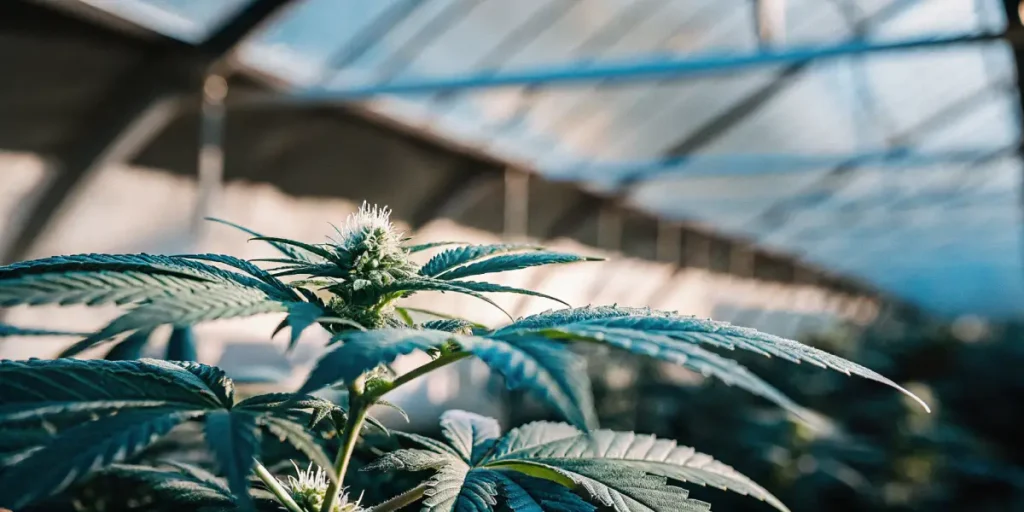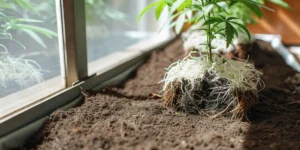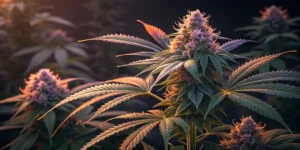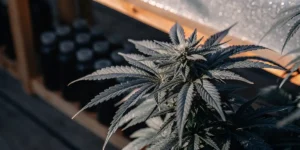When growing autoflower cannabis, maintaining the right humidity levels during the flowering stage is crucial. Autoflowers have a different growth cycle compared to photoperiod plants. They transition to flowering based on age, not light cycles. This makes the flowering stage particularly sensitive to environmental conditions, especially humidity.
Autoflower humidity during flowering should be managed carefully to prevent mold and mildew, which thrive in high humidity. Keeping the right balance can enhance bud development and potency. Let’s look into how you can achieve this for successful harvests.
For instance, when growing strains like Northern Lights Autoflower from Global Green Genetics, you need to be precise with environmental control. The flowering stage is when the plant focuses its energy on bud production, making it vital to provide the best possible conditions.
Optimal Humidity Levels for Autoflowers During Flowering
The best humidity range for autoflower cannabis in bloom is typically between 40% to 50%. This range minimizes the risk of mold while allowing buds to develop fully. Young autoflowers might tolerate slightly higher humidity, but as they mature, reducing moisture becomes critical.
Humidity levels outside this range can lead to problems. High humidity can cause bud rot, a common issue in dense bud strains like Blueberry Autoflower. On the other hand, too low humidity can stress the plants, slowing down their growth. Ensuring the right balance is key for healthy plants.
To achieve the optimal humidity levels for autoflowers during flowering, growers should consider the specific needs of each strain. Some strains might require slight adjustments to the general humidity guidelines to thrive. Regularly checking the plants’ response can help fine-tune these conditions for maximum yield and quality.
Another factor to consider is the overall climate of the growing environment. Autoflower plants in drier regions might require humidifiers to maintain the best humidity range for autoflower cannabis in bloom. Conversely, in humid areas, additional measures to reduce moisture, such as silica packs or increased airflow, might be necessary.
Managing Humidity for Autoflower Plants in Flower Stage
Using a hygrometer can help you monitor the relative humidity in your grow space accurately. This device is essential for any grower aiming to keep their autoflowers healthy. Place the hygrometer at canopy level to get the most accurate readings.
To lower humidity, consider using a dehumidifier. This is especially useful in humid climates or during rainy seasons. A dehumidifier helps maintain a stable environment by absorbing excess moisture from the air. This tool is invaluable for controlling moisture for autoflower strains during flowering.
Managing humidity for autoflower plants in the flower stage also involves regular maintenance of your equipment. Ensuring that your fans, dehumidifiers, and hygrometers are functioning correctly is crucial for maintaining ideal humidity settings for autoflowering cannabis during flowering. Regular checks prevent unexpected spikes in humidity that could harm your plants.
Additionally, integrating smart technology can enhance humidity management. Automated systems that adjust humidity levels in real-time according to set parameters can offer growers peace of mind and increase the efficiency of their grow operations. Such systems can be particularly beneficial for those cultivating multiple strains with varying humidity needs.
Practical Tips for Controlling Moisture
Adjusting your watering schedule can also impact humidity levels. Watering in the morning gives your plants time to absorb moisture before nighttime, reducing the risk of high humidity overnight. This practice is particularly beneficial for strains like Amnesia Haze Autoflower.
Another tip is to increase the spacing between plants. Overcrowding can lead to higher humidity as plants transpire moisture into the air. By spacing them out, you allow better air circulation, which helps in managing humidity for autoflower plants in flower stage.
For those new to growing, understanding how different environmental factors interact is key to controlling moisture for autoflower strains during flowering. For instance, soil composition and pot size can influence how much water your plants retain and transpire, indirectly affecting humidity levels.
Moreover, utilizing reflective materials in your grow space can optimize light use and reduce excess heat, which might otherwise contribute to increased humidity. This method not only supports healthy plant growth but also aids in maintaining the optimal humidity levels for autoflowers during flowering.
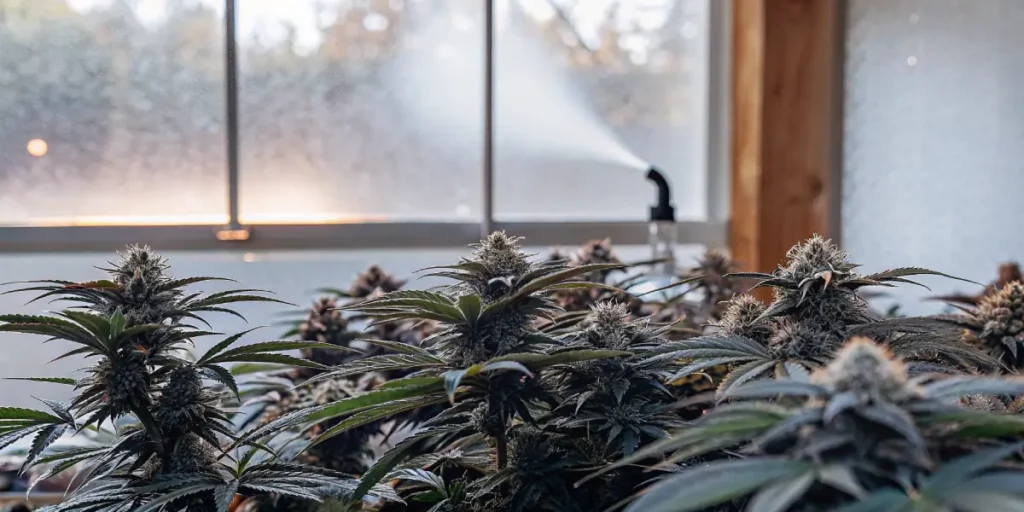
Best Practices for Environmental Control
Investing in a quality grow tent can also make a big difference. These tents are designed to provide a controlled environment, helping you maintain the best humidity range for autoflower cannabis in bloom. They are equipped with ventilation ports and reflective interiors to optimize light and air distribution.
Consider using silica gel packets or moisture-absorbing crystals around your grow space. These products can help reduce humidity levels further, acting as a supplementary method alongside your primary systems. They are particularly useful in small grow rooms where space for a dehumidifier might be limited.
For larger operations, automation and smart technology can revolutionize environmental control. Systems that automatically adjust temperature and humidity can significantly ease the burden on growers and ensure that conditions remain within the ideal humidity settings for autoflowering cannabis during flowering.
It’s also beneficial to keep detailed records of your environmental conditions and plant responses. Over time, this data can help you identify patterns and make informed adjustments to your humidity management strategies, ultimately leading to more successful harvests.
Real-Life Examples and Strain Recommendations
Let’s consider a scenario where you are growing multiple strains, including Northern Lights Autoflower, Blueberry Autoflower, and Amnesia Haze Autoflower from Global Green Genetics. Each of these strains may have unique humidity preferences, but maintaining a general range of 40%-50% will cover all bases.
When dealing with different strains, always keep an eye on your plants’ response to humidity levels. Some might show signs of stress or mold if conditions are not ideal. Adjust your strategies accordingly to ensure each strain thrives during its flowering phase.
Experimenting with various strains can help growers understand the nuances of autoflower humidity during flowering. This knowledge is invaluable when optimizing conditions for both potency and yield. By closely observing plant behavior, growers can tweak their approach to managing humidity for autoflower plants in the flower stage.
Additionally, considering local climate conditions when selecting strains can also play a role in successful cultivation. Strains that are naturally more resistant to humidity fluctuations may require less intensive environmental control, simplifying the grow process for those in challenging climates.
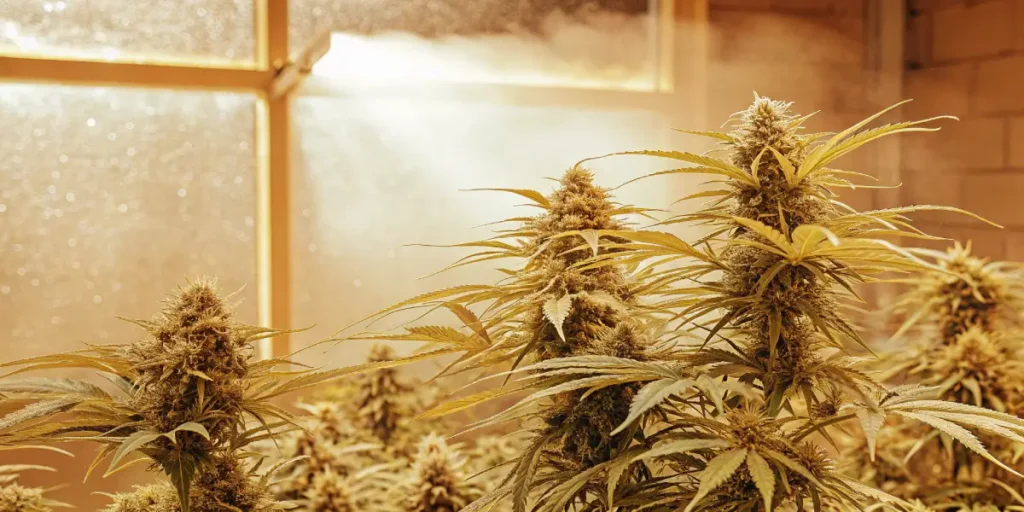
FAQs
What are the risks of high humidity during the flowering stage?
High humidity during the flowering stage can lead to mold and mildew growth, which are detrimental to your plants. Mold can spread quickly, damaging buds and potentially ruining an entire crop. This is especially concerning for dense buds, as they trap moisture more easily.
In addition to mold, high humidity can also stress your plants. Stressed plants are more vulnerable to pests and diseases, which can further compromise your harvest. Keeping humidity within the recommended range helps ensure a healthy, productive grow environment.
Beyond mold and mildew, prolonged exposure to high humidity can also disrupt the plant’s nutrient uptake, leading to deficiencies that can impact growth and bud quality. This underscores the importance of maintaining optimal humidity levels for autoflowers during flowering.
Therefore, regular checks and immediate corrective actions are critical. Installing alarms or notifications for humidity deviations can help growers take swift action to protect their plants from the adverse effects of excessive moisture.
How can I lower humidity in my grow space?
Lowering humidity can be achieved through several methods. A dehumidifier is one of the most effective tools, especially in areas with naturally high humidity. It helps by actively removing moisture from the air, ensuring that your plants remain in the optimal humidity levels for autoflowers during flowering.
Improving ventilation is another effective strategy. Fans and exhaust systems can help circulate air, preventing moisture build-up. By using these methods together, you can maintain a stable environment, crucial for the health of your autoflower plants.
Additionally, heating systems can be used to lower humidity, as warmer air holds less moisture. This method is particularly useful during colder months when natural humidity levels can rise. Combined with increased ventilation, this approach can effectively manage autoflower humidity during flowering.
Another tip is to regularly inspect and clean your ventilation and dehumidification systems. Clogged filters or obstructed airways can lead to inefficiencies, allowing humidity to rise unnoticed. Regular maintenance ensures these systems operate at peak performance, safeguarding your grow space.
Is it necessary to monitor humidity daily?
Yes, daily monitoring of humidity is essential in the flowering stage. Environmental conditions can change rapidly, and what may be acceptable one day could become problematic the next. Consistent monitoring allows you to make quick adjustments as needed.
Using digital hygrometers with memory functions can help track changes over time, providing a clear picture of your grow room’s conditions. This data is invaluable for making informed decisions about your environmental control strategies.
Daily monitoring not only helps in identifying trends but also in spotting sudden changes that could indicate equipment failure or environmental shifts. This proactive approach to managing humidity for autoflower plants in the flower stage helps ensure a robust and healthy crop.
For larger operations, considering automated systems that alert you to any deviations from the ideal humidity settings for autoflowering cannabis during flowering can save time and reduce the risk of human error. Such systems provide an added layer of security for your plants.
Can humidity affect the potency of my buds?
While humidity doesn’t directly affect cannabinoid levels, it can influence overall plant health and bud quality. High humidity can lead to mold, which degrades buds and reduces their quality. Conversely, keeping humidity within the ideal range supports robust bud development.
Healthy plants tend to produce more aromatic and potent flowers. By managing humidity effectively, you ensure that your plants are in the best position to produce high-quality harvests.
Maintaining the best humidity range for autoflower cannabis in bloom not only prevents mold but also helps in maintaining the terpene profile of the plant. Terpenes are responsible for the aroma and flavor of the buds and are sensitive to environmental conditions.
Therefore, by achieving the optimal humidity levels for autoflowers during flowering, you enhance the overall sensory experience of your harvest, which is a significant factor for many growers seeking premium-quality cannabis.
What should I do if I notice mold on my plants?
If you spot mold on your plants, act quickly to prevent it from spreading. Remove affected areas immediately, and assess your grow environment for humidity issues. It’s crucial to adjust your humidity control strategies to prevent further outbreaks.
Increase air circulation and consider using antifungal treatments if necessary. Mold can devastate a crop if left unchecked, so proactive management is essential for maintaining a healthy grow space.
In cases where mold appears, it’s also beneficial to review your recent environmental data. Understanding what led to the spike in humidity can help prevent future occurrences and refine your strategies for controlling moisture for autoflower strains during flowering.
Always ensure that preventative measures are in place, such as regularly checking for leaks or standing water in your grow space. Addressing these issues promptly can help maintain the ideal humidity settings for autoflowering cannabis during flowering and protect your crop.

